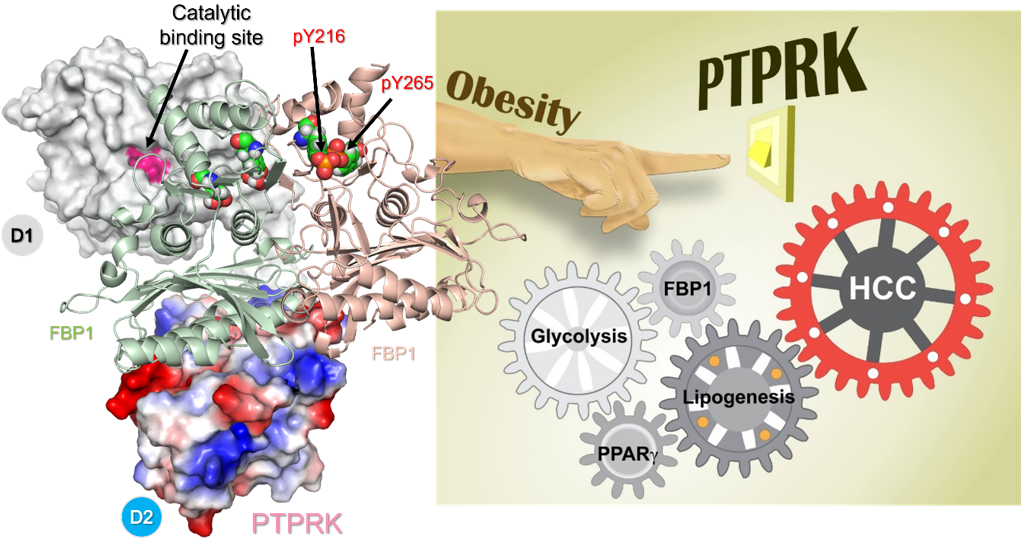A new mechanism explains how obesity promotes liver cancer development.
Image credit: Eduardo H. Gilglioni and José Antonio Encinar
Professor José Antonio Encinar, a researcher at the Institute of Research, Development, and Innovation in Health Biotechnology of Elche (IDiBE) at UMH, has contributed to a study led by Professor Esteban Gurzov (FNRS Maître de Recherches) that uncovered the role of a key protein in the transformation of normal liver cells into tumor cells under obesity conditions. The research identified that the expression of the enzyme PTPRK was elevated in the liver of both obese humans and mice. Increased hepatic expression of PTPRK triggers higher glycolysis pathway activity, culminating in the activation of PPARγ and the stimulation of de novo lipogenesis. In mice, the genetic deletion of PTPRK provided protection against the rapid development of fatty liver under an obesogenic diet and the onset of liver cancer.
The study positions PTPRK as a dual actor: it functions as a biomarker for hepatic metabolic adaptations influencing the risk of metabolic liver diseases and as a potential target for developing novel therapies. Additionally, two specific PTPRK inhibitory compounds have been discovered, for which a patent application has been filed, with UMH holding a 33% ownership stake. Obesity affects approximately 880 million adults worldwide and is a major risk factor for severe complications such as increased susceptibility to diabetes and liver cancer.
This work was funded by FNRS, TELEVIE, WELBIO, Fondation ULB, and an ERC Consolidator Grant in Professor Gurzov’s laboratory. The study was recently published as a scientific article in Nature Communications, with twenty-eight co-authors from seventeen institutions. Professor Encinar contributed the computational developments included in the article and received funding from two projects he is involved in as a researcher, supported by the Ministry of Science and Innovation (Project PID2021-125188OB-C32) and the Valencian Government (PROMETEO/2021/059). This publication is expected to be instrumental in attracting potential industrial partners for licensing the PTPRK inhibitors developed through this research.

